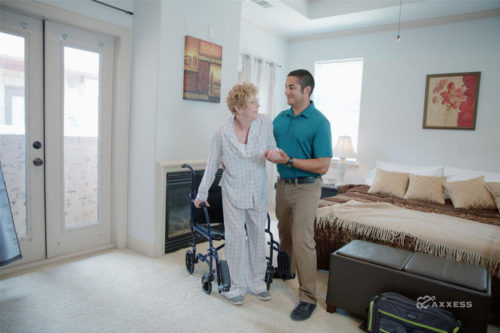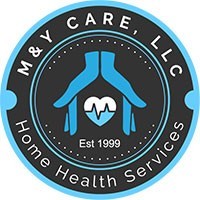
by M | Jul 14, 2020 | News |
Hospital readmission rates are one of the most important markers of success in the post-acute and long-term care spaces. But a large number of home care agencies still don’t keep track of those metrics.
Overall, 75% of home care agencies did not track readmission rates at all in 2019, according to recently released data from Idaho-based market research and education firm Home Care Pulse.
Historically, home care has largely been focused on activities of daily living (ADLs) and social determinants of health — things that sometimes fall slightly outside of the medical lens. With that in mind, it’s not entirely surprising that one-quarter of home care agencies haven’t been tracking their clients’ readmission rates.
Increasingly, though, home care agencies are taking care of clinically complex, chronically ill individuals, people who are constantly in and out of hospital settings. Additionally, agencies are starting to develop relationships with Medicare Advantage (MA) plans and accountable care organizations (ACOs), both of which seek to curb health care spending and keep their members in the lowest-cost settings possible.
Today, if a home care agency wants to be competitive in the MA landscape or win partnerships with ACOs, it likely needs to have advanced data capabilities, Home Care Pulse CEO Erik Madsen told Home Health Care News.
But it’s not always that simple, he noted.
“It’s one of the challenges,” Madsen said. “The industry is very much relationship-based. And that also brings some downside in my opinion, because companies are slow to embrace technology, they’re slow to embrace data, they’re slow to embrace some of these other areas that other [adjacent] industries have taken more seriously.”
Without a doubt, direct relationships between home care agencies and their clients will continue to be important. But without embracing data, even agencies with the most quality relationships could fall behind.
Improved operational procedures could bring agencies to the next level, but they’re not always on the top of their priority lists.

“[Home care agencies] are slower to adopt those operational processes and procedures that they’re going to have to if they want to compete in the next decade,” Madsen said. “It’s just a fact.”
Part of the problem is that a vast majority of home care agencies operate on a smaller scale, with razor-thin margins and relatively small administrative teams.
In these situations, many agencies looking to invest in their data capabilities don’t know where to start. But that way of thinking needs to change, Family Resource Home Care CEO Jeff Wiberg said during HHCN’s Medicare Advantage Summit in June.
amily Resource Home Care is a large, independent home care operator out of the Pacific Northwest. The agency recently invested in new software to collect all sorts of data, partly to prepare itself for more MA business in the future.
“I think we’d really be putting our head in the sand if we don’t start gathering details and information that will help position us as an industry to really demonstrate our value,” Wiberg said. “[That 25% number] — that’s a big wake up call to say, as an industry, we need to be collecting more of this data.”
As one of the home care agencies to embrace data, Family Resource Home Care tracks a whole lot more than just readmission rates, too. It’s other focus areas include tracking emergency room utilization and fall rates for its clients.
Family Resource Home Care additionally keeps tabs on its census and how many clients are living with multiple co-morbidities, among other information. It also separates hospital readmission rates into different categories, including hospitalization rate prior to home care admission.
“Getting away from that pen and paper [system] is going to be key,” Wiberg said.
‘Winning a seat at the table’
Even for the agencies that are collecting hospital readmission data, nearly 40% are using Excel spreadsheets or another less-than-scientific way to track numbers, according to Home Care Pulse.
“The average agency, they’ve just got a couple of people working, between answering the phone and trying to recruit, retain, train and do check-ins,” Madsen said. “Margins are small enough that they don’t have an overabundance of staff. So they’ve got to identify what are those two or three key [data] points that they want to track are and then really dial in on those.”
In 2019, the typical home care agency collected anywhere from $800,000 to $2.8 million, on average. The majority of them have been in operation for over seven years, usually relying on just one location for business.
Omaha, Nebraska-based Right at Home is another home care organization that has invested in data capabilities and tracking client readmission rates. As a franchise system, Right at Home has nearly 500 U.S. locations.
Right at Home had been working to develop its data strategy even before new MA opportunities started to appear. The steps the U.S. Centers for Medicare & Medicaid Services (CMS) has taken to open up MA to home care only accelerated those efforts.
“Let’s make sure that we’re on a path to cleaning up our data and trying to get better access to our data as a system,” Right at Home CEO Brian Petranick said at the HHCN MA Summit. “[The MA tailwinds] gave us some fuel for our message. Now we have [even more reason] … to collect data.”

Among its efforts, Right At Home tracks patients’ changes in condition and takes a special interest in a wide array of social determinants of health.
Cincinnati-based FirstLight Home Care has likewise invested heavily in its data capabilities, according to CEO and founder Jeff Bevis.
“We went ahead and pursued an actual [electronic medical record] and have that component in our software platform now.” Bevis said during the MA Summit. “If home care companies are able to really track that data and go away from pen and paper … that’s going to make all the difference too.”
The top home care providers in the country are becoming more and more intricate with their data collection.
The smaller agencies, with a few simple steps, can kickstart a better system for themselves and paint a brighter picture for home care overall along the way.
“The next decade in home care is going to be just phenomenal as we start to become more mature as an industry [through these processes] and get more opportunity to have a seat at the table,” Madsen said.
By Andrew Donlan | July 13, 2020
Source: Home Health Care News

by M | Jul 11, 2020 | News |
More than half of all accountable care organizations (ACOs) deliver home health care to their patients, while an additional 17% have new home visit programs in the works.
That’s according to a recent survey of National Association of ACOs (NAACOS) members, conducted in conjunction with the Institute for Accountable Care (IAC) and West Health Institute. Washington, D.C.-based NAACOS is an industry advocacy group representing hundreds of ACOs, which cover an estimated 23 million patients who have Medicare, commercial insurance and Medicaid.
The survey findings should come as welcome news to home-based care providers, who have long tried — and largely failed — to build partnerships with ACOs. Home health providers have argued that they can help improve patient outcomes, but ACOs have often undervalued that ability.
The coronavirus is only likely to help prove home-based care’s worth, according to Rob Mechanic, senior fellow at the Heller School of Social Policy Management at Brandeis University and executive director of IAC, a Washington, D.C.-based research organization founded by NAACOS.
“Since COVID, … there are some [ACOs] that are frankly growing their [home-based care] programs, because they’re concerned that patients are not seeking treatment when they have serious problems,” Mechanic told Home Health Care News. “I think home-based care is tailor-made for ACOs.”
Despite Mechanic’s COVID-19 predictions, the aforementioned survey was conducted in a pre-coronavirus world. It ran from the end of September 2019 through the start of January 2020, polling ACOs on their home-based care practices.
A total of 163 ACOs were surveyed, with the large majority of respondents being participants in the Medicare Shared Savings Program. A few were Next Generation ACO program participants.
Of the respondents, 26% said they have a home visit program, while 25% conduct home visits but don’t have a formal program. Additionally, another 17% have a home-visit program in the works.
Only 32% of respondents said they had no plans to start a home-visit program.
The full results of the study have yet to be released because the findings have been submitted to a peer-reviewed journal. However, Mechanic said the results reflect the growing interest in home-based care delivery by ACO programs.
“It didn’t surprise me at all because, frankly, this is something that makes a lot of sense for ACOs,” he said. “ACOs ultimately are judged against a global budget, a total home health care budget. So ACOs can afford to invest in non-billable, non-revenue producing activities that will lower home health care spending.”
The main reason respondents reported having a home-visit program was to deliver primary care. Other popular reasons for having a home-visit program were to support care coordination efforts and transitions from in-patient settings to the home.
A smaller percentage of respondents said they have a home-visit program to better address social determinants of health. Some also said their home-visit programs were part of a hospital-at-home model.
While a growing number of ACOs seem to be coming around on home-based care, that doesn’t automatically equate to shared savings for home health care agencies.
There’s a lot of diversity in how programs are delivering home-based care, Mechanic said, but generally even when in-home health care companies have been involved with ACOs, they’re still left out of shared savings ACOs generate. Instead, the arrangements are usually fee-for-service.
Mechanic is hopeful those relationships will evolve in the future.
“I would like to see, over time, more [ACO] partnerships with different kinds of groups,” he said. “Both ACOs and home health care agencies have to come to the table with open minds and to be flexible and creative. I think that can lead to partnerships that are good for both of them.”
By Bailey Bryant
Source: Home Health Care News

by M | Jul 9, 2020 | News |
It’s time for policymakers, hospitals and everyone else at the home health care roulette table to bet all their chips on proactive, pre-acute home-based care.
During the coronavirus pandemic, the U.S. health care system has undergone a massive change marked by the skyrocketing use of telehealth technology and the shift away from brick-and-mortar medical appointments. In fact, from April 2019 to April 2020, telehealth claim lines have increased by more than 8,300% nationally, according to FAIR Health data.
For the most part, though, traditional home-based care has felt like a secondary priority over the past few months, with home health providers and home health care agencies largely overshadowed by telehealth trends, hospital capacity concerns and the general state of nursing homes, which continue to be devastated by COVID-19.
“I think that [policymakers] have been very responsive to the needs in the hospital setting,” a Maine home health executive previously told Home Health Care News. “I do not feel that they fully understand the complexity of the patients seen by home health and hospice providers.”
Health care stakeholders may have missed the opportunity to aggressively invest in-home health care during the initial coronavirus spike, but that door is opening wide once again. Or rather, it never really closed.
The country’s rolling seven-day average of daily new COVID-19 cases shattered all previous records on Monday for the 28th day in a row, the Washington Post reported. At the same time, hospitals across the Sun Belt are being overwhelmed by coronavirus patients, with Arizona reaching 89% capacity for intensive care unit beds and California, Georgia, North Carolina, Texas and a handful of additional states experiencing unprecedented hospitalization numbers.
The new coronavirus spikes in the South and West aren’t part of a different, second COVID-19 wave. They’re continuations of the first wave that was never properly addressed.
Overall, the U.S. death toll linked to the coronavirus hit 130,000 this week, statistics from Johns Hopkins University show. The number of total infections is approaching 3 million.
With those numbers in mind, Dr. Anthony Fauci, the head of the National Institute of Allergy and Infectious Diseases and a leading member of the Trump administration’s coronavirus task force, is calling for urgent action.
“It’s a serious situation that we have to address immediately,” Fauci said during an online interview Monday with Dr. Francis Collins, who leads the National Institutes of Health as its director.
As part of the nation’s renewed response to the coronavirus, home health and home care need to now be front and center. Fortunately, there are several readily available actions out there that the federal government and other health care players can take to support all shapes and sizes of in-home care providers.
When it comes to home health care agencies, in particular, the U.S. Centers for Medicare & Medicaid Services (CMS) can start by reopening its advanced and accelerated payment programs, allowing operators to focus on patient care and not their finances.
Home health agencies experienced huge financial losses during the early days of the coronavirus due to patients canceling visits and the general suspension of elective surgeries. Cash flow disruptions have somewhat stabilized, but the recent resurgence of COVID-19 cases may retrigger the same anxieties and roadblocks that agencies had to previously overcome.
From March through April, CMS distributed more than $100 billion in advanced and accelerated payments to all Medicare providers. Home health providers received just $1.7 billion of that before CMS shut down the programs — and many home health agencies in emerging hotspots never even had the opportunity to apply for payments, as they’re just now feeling the impact of the coronavirus.
On top of reopening its advanced and accelerated payment programs, CMS should also consider giving home health providers a more robust Medicare rate adjustment. While the National Association for Home Care & Hospice (NAHC) and other industry advocates have called for a 15% rate increase, CMS recently suggested a 2.6% reimbursement bump in its proposed payment rule for 2021.
Many home health providers won’t be able to stay afloat for much longer without additional financial lifelines. In New York alone, home-based care providers expect to lose upwards of $200 million in 2020, according to financial estimates by the Home Care Association of New York State (HCA-NYS).
“These losses have alarming implications for the viability of New York’s home care system and the necessary support it provides for patients,” Roger Noyes, director of communications at HCA-NYS, previously told HHCN.
Meanwhile, when it comes to supporting home care agencies, Congress should start by seriously considering the creation of a fund that helps operators finance hazard pay and other benefits for front-line workers in its next relief package.
It’s an idea that had been floated by House Democrats in their Health and Economic Recovery Omnibus Emergency Solutions (HEROES) Act unveiled in May. Specifically, the House bill included a $200 billion fund for hazard pay for all essential workers.
Interim HealthCare Inc. CEO Jennifer Sheets previously told HHCN she would “love to see” government-supplemented hazard pay for health care workers.
“We need to incentivize people to be on the front line, especially in a pool that’s already prone to high turnover,” she said.
Apart from financial assistance, the Trump administration and FEMA should also organize a personal protective equipment (PPE) push for in-home care providers, similar to what they did for nursing home operators back in April. In-home care agencies have had just as difficult a time securing PPE, if not greater, as they’ve been excluded from most priority lists during the COVID-19 crisis.
Outside of the government, hospitals also need to accelerate the shift toward in-home health care. Many already have, including North Memorial Health Hospital in Minnesota, which recently partnered with whole-person, home health care provider Lifesprk to offer a hospital-at-home model.
“With the outbreak and shortage of personal protective equipment (PPE), one of the just really sad things that all of us have witnessed is when someone goes into the hospital right now and is very sick, their loved ones can’t be there with them,” Dr. Carolyn Ogland, North Memorial’s CMO, previously told HHCN. “This is a way to really help our families and our patients stay together when they are sick.”
If the U.S. health care system acts quickly and invests in home health care, it will emerge from COVID-19 stronger than ever. But the window of opportunity is closing, so stakeholders must act now.
By Robert Holly | July 7, 2020
Source: Home Health Care News

by M | Jul 6, 2020 | News |
When pain radiated from Fred Thomas’ neck down his arm and he couldn’t feel his fingers anymore, he knew it was time to talk to a doctor.
After getting an MRI ordered by his primary-care doctor, the 49-year-old land surveyor had several phone conversations with a Rothman Orthopaedic Institute specialist he’d never met to discuss the problem and treatment options. He was scheduled for a cervical fusion to replace three damaged disks in his spine a couple of weeks later.
“By the time I met him, I felt like I’d been in his office 15 times,” said Thomas, who lives in Wilkes-Barre. “We spoke in person for the first time a few minutes before he operated.”
Months ago, few patients or doctors would have considered surgery without so much as in-person consultation, but the coronavirus pandemic has forced the health care system to embrace telemedicine like never before.
With no other way to see a doctor as the virus shuttered all but the most essential health care service, regulatory hurdles that hamstrung the growth of telemedicine for decades were wiped away: Private insurers, Medicare and Medicaid agreed to pay the same rates for telemedicine visits they would have for in-person appointments. The federal government loosened privacy regulations that had in the past restricted how patients and doctors communicate virtually.
In response, telemedicine visits soared. The approach has been exceedingly popular among patients and doctors, and so universally adopted by health systems that experts say telemedicine is likely here to stay. Not only have health systems proven that telemedicine is an effective and useful tool for treating existing patients, virtual doctors’ visits also present an opportunity for health systems now forced to grapple with the racial inequities highlighted during the pandemic to improve access to care.
“We have this opportunity as the result of a very horrific, virulent disease to re-imaginehealth care service,” said Nicol Turner Lee, a senior fellow at the Center for Technology Innovation at the Brookings Institution.
But maintaining telemedicine will be possible only if providers and insurers are able to agree to fair payment, and if regulators are able to work out security and patient privacy issues.
Exponential growth in telehealth
When the pandemic shut down non-urgent medical services in Philadelphia in March, Penn Medicine quickly equipped nearly 9,000 providers to meet patients by video or phone and now averages 5,000 telemedicine visits a day – a nearly overnight change from a few hundred doctors doing a few hundred visits.
While in-person visits plummeted 90% at Jefferson Health, virtual visits rose from a couple hundred a week in February to 20,000 a week in June. Some of those calls were about coronavirus, but the vast majority were “regular doctors’ visits,” said Judd Hollander, senior vice president for Health Care Service delivery innovation at Jefferson Health.
“Telemedicine grew out as rapidly as it did because people were afraid of COVID and because reimbursement models changed,” said Hollander, an emergency medicine doctor.
Jefferson is now bringing back patients for in-person visits, but Hollander expects that about a third of visits will remain virtual – in part because of how popular the approach is with patients, who score telemedicine “light years ahead” of office visits on patient satisfaction surveys for its convenience.
“They’ve seen the benefit of staying home,” he said.
For Thomas, meeting with his specialist at Rothman Institute by phone or by video eliminated the need for multiple, day-long trips into Philadelphia. That journey would have been especially difficult after his surgery when he was not able to move his neck for several weeks. He had follow-up scans done near his home and spent a few bucks to mail them to Rothman – far less than he would have shelled out on gas and parking.
In the past, telemedicine was considered an option for routine chronic care appointments or quick check-ins. But the pandemic challenged doctors to find ways to perform through video the services they assumed could be accomplished only in person.
“This has broken a lot of long-held principles, like, ‘You can’t do that’ and ‘Change is bad,'” said Bill Hanson, chief medical information officer at Penn Medicine.
At Einstein Healthcare Network’s Moss Rehab, Chris Plastaras, clinical director of musculoskeletal spine and sports rehabilitation medicine, filmed short instructional videos for at-home strength tests.
Even with patients slowly returning to the office, Plastaras often prefers video because he is better able to read facial cues that are crucial to interpreting a patient’s progress – if he saw a patient in person, the patient would be hidden by a face mask.
“If you bring up a treatment option and you see the patient cringe, OK, you don’t want to do that. Or their face brightens, then, OK, we’ll do that more,” he said. “It really is something that’s important as we counsel patients in their treatment options, having that nonverbal feedback.”
Barbara Gilin had spine surgery at the beginning of February, before the pandemic hit. But by the time she was ready for rehabilitation work – typically a hands-on kind of medical appointment – a video visit was her only option.
“I think the biggest surprise to me was how thorough the physical exam could be,” said Gilin, a psychotherapist who lives in Montgomery County and is a patient of Plastaras’.
The insurance hurdle
Even with some stumbling points, such as how to secure prior authorization and get patients needed testing, many health system executives now describe telemedicine as a genie that can’t be put back in its bottle. But the changes that made its widespread adoption possible were intended to be temporary. A permanent change will require more work.
“It was a sensible thing in a pandemic to say just ‘make it happen.’ But it’s not sensible to say ‘there are no rules,'” said Carmel Shachar, executive director of the Petrie-Flom Center for Health Law Policy, Biotechnology, and Bioethics at Harvard Law School.
Federal regulators permitted medical use of Facetime and other popular video chat tools during the pandemic, but these platforms don’t meet federal patient privacy rules.
Private insurance agreements to cover telemedicine during the pandemic are also temporary. But without insurance coverage, virtual visits are impossible.
“This is progress … but if you don’t pay for this we can’t do it and it’s forcing us to go to the older model where people spend 21/2 hours driving in, waiting,” said Alexander Vaccaro, president of the Rothman Institute. “We’re begging the insurers to come up with fair rules.”
Vaccaro said he wants about 30% of Rothman appointments to remain virtual, but doctors have already received notices from most major insurers about their plans to suspend telehealth coverage in the coming months.
The federal Centers for Medicare and Health Care Service has said it is considering making access to telemedicine permanent, which may pave a path for private insurers to follow.
Independence Blue Cross, the largest private insurer in the Philadelphia area, plans to extend its pandemic coverage for telemedicine through the end of the year, said Richard Snyder, the insurer’s chief medical officer. Independence wants to maintain telemedicine coverage. But instead of paying for every test and visit, contracts may instead pay based on how well a patient is cared for.
“I don’t think pre-COVID utilization of telemedicine was in any way optimal,” Snyder said, but neither is it appropriate for every type of visit.
Shifting some appointments to virtual visits could ease strain on doctors’ offices, which are working through a backlog of missed appointments slowly to maintain social distancing. At the same time, hospitals could miss out on revenue if they can’t charge a facility fee.
“We have to start thinking, going forward, what is the right mix of care so we can take care of everyone – and remain financially solvent,” Hollander said.
Opportunities and challenges
The stakes for how telemedicine becomes a permanent fixture also are high because it presents an opportunity to address long-standing inequities in health care service.
“Telemedicine can be an equalizer in the sense that it allows greater distribution of the good stuff medicine has to offer across geography and socioeconomic levels,” said Hanson, of Penn.
Virtual visits may be more accessible for people who lack transportation, can’t take off work, or don’t have child care – barriers that disproportionately affect low-income communities.
Already, Hanson said, Penn has noticed that some patients with chronic health problems have been better able to keep up with their needs through telemedicine than with traditional office visits.
But it can also create new challenges, in particular for people for whom English is their second language or who do not have Internet access.
At Philadelphia’s Strawberry Mansion Health Care Service, the primary-care provider for families in a particularly low-income neighborhood, virtual visits could be helpful, said Tanya Malone, the city-run health center’s clinical director. But many patients aren’t connected to the Internet or don’t have phones with video capabilities. That is a barrier, Malone said, that must be addressed.
“Most of our patients, we are their primary-care physician, we are their home base,” Malone said. “I’m sure we’ll come up with some kind of plan. … This is going to be the future of medicine.”
By SARAH GANTZ | July 06, 2020 04:00 AM
Source: The State

by M | Jul 4, 2020 | News |
Caring for older adults was already expensive, emotionally taxing and logistically difficult — and the coronavirus is only making it worse.
Why it matters: People older than 65 have the highest risk of dying from the virus, and outbreaks have been rampant in long-term care facilities. That is creating anxiety for seniors and their families.
The big picture: Most seniors will need at least some long-term care, but the coronavirus has added even more complications to the tough decisions about how to obtain it.
- Assisted-living and independent-living facilities cost an average of at least $4,000 a month, almost always paid out of pocket.
- Nursing homes are generally more affordable, but people often have to burn through their savings, pensions and other assets on their way there.
- Nursing homes also are cramped, understaffed and have poor track records with infection control to begin with — and they’ve been hotbeds for the spread of the coronavirus.
- Home care is another option. If a professional worker isn’t available, the task often depends on the charity of a friend or relative, and that’s a dicier proposition when those friends or relatives could be carrying the virus — or unemployed, caring for children or otherwise just not able to help.
Where it stands: The pandemic has severely hindered operations across the industry.
- Senior housing operators have limited tours of rooms and communities to prospective residents and one family member, or they are only providing virtual tours. That limited recruitment, combined with widespread outbreaks and lockdowns, has led to fewer people moving in.
- The federal government is starting to ease some restrictions at nursing homes, but is saying they “should be among the last to reopen within the community.”
Controlling outbreaks depends on facilities stocking up equipment for employees and conducting widespread testing — things the industry hasn’t exactly been heralded for.
Between the lines: Seniors who want to avoid the virus-related risks could try to stay and get care at their homes, which more people have done in recent years. Adult children also may try to move their parents closer to their homes.
- “But not all parents want to do that,” said Toby Edelman, a senior policy attorney with the Center for Medicare Advocacy.
- Home health aides can also be hard to find. Despite the demand, the job pays poverty-level wages.
The bottom line: “Especially with the way [the coronavirus] has spread at these facilities, there’s going to be a fear until there’s trust that the risks are sufficiently low,” said Carri Chan, a health care business professor at Columbia University.
By Bob Herman | May 26, 2020
Source: AXIOS







